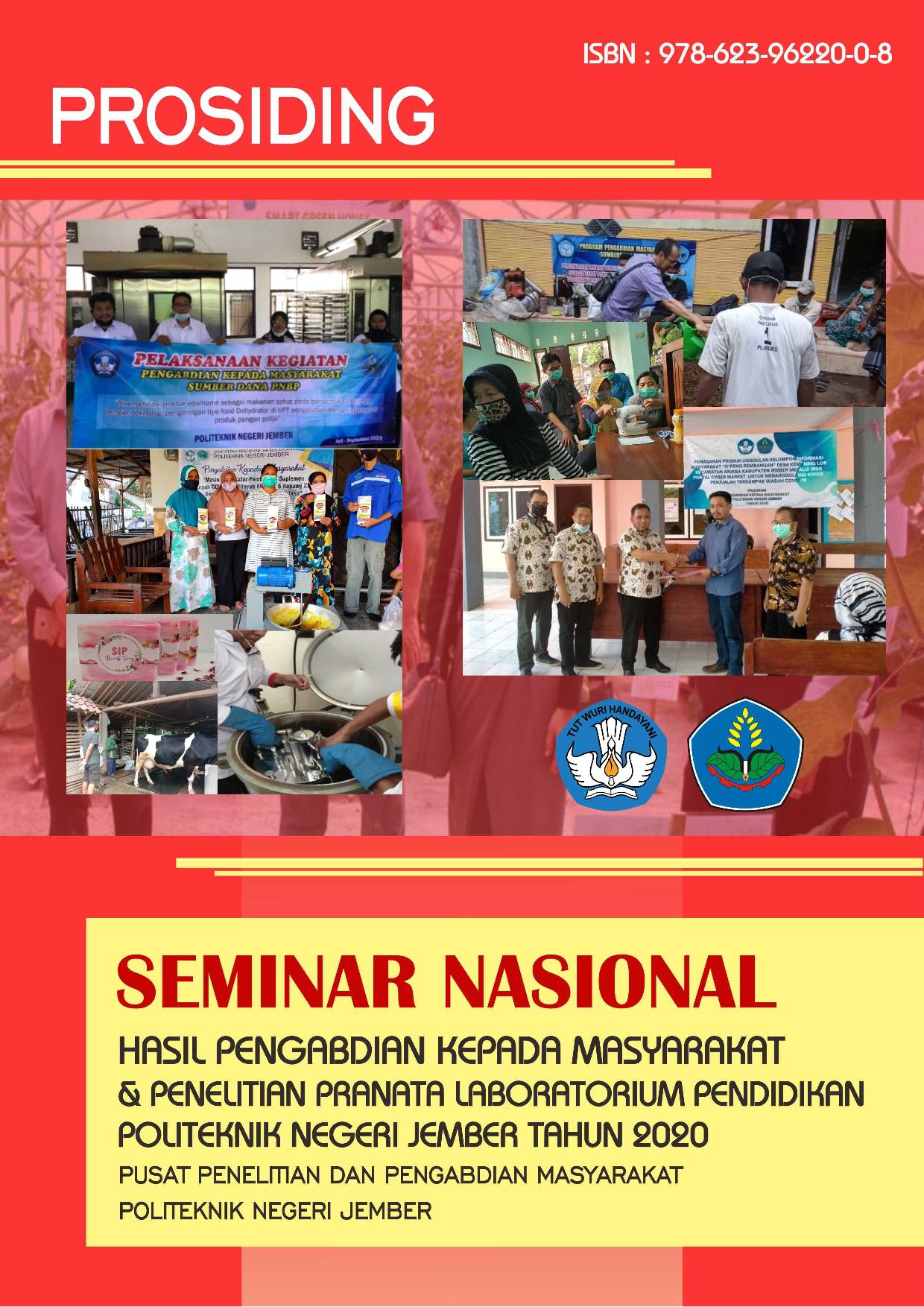Pemberdayaan Petani Melalui Pelatihan Pembuatan Tricho Pukan Menggunakan Teknologi Komposting Takakura Di Gapoktan Makmur Desa Kemuning Lor
Kata Kunci:
organic fertilizer, takakura, trichoderma, trichopukanAbstrak
Kemuning Lor Village in Arjasa District with an area of 10.89 km2 is known as one of the villages in Jember Regency which still relies on the agricultural sector as the basis and driving force for the regional economy. Based on data from the Central Statistics Agency for Jember Regency in 2019, 3,563 people or around 68.82% of the total population working in Kemuning Lor Village work as farmers or agricultural laborers. The Makmur Farmer Group Association (Gapoktan Makmur) is a community group in Dusun Darungan, Desa Kemuning Lor which is engaged in the agricultural sector. So far, farmers in this area rely on rice, corn, dragon fruit and coffee farming for their livelihoods. Gapoktan Makmur encountered several obstacles or problems in carrying out its farming, including the high price of chemical fertilizers, lack of knowledge and skills in managing livestock waste into organic fertilizer, and the absence of a business unit that can help farmers increase their income and welfare. Some of the solutions offered to deal with partner problems include socialization / education on the benefits and prospects of using organic fertilizers as a substitute for chemical fertilizers, training in making organic fertilizers with raw materials for goat livestock waste with biological agent biodecomposers Trichoderma sp with Takakura Composting Technology, and organic fertilizer business assistance. The output of this activity is that partners can use organic fertilizers to substitute chemical fertilizers, partners have technical skills in making Tricho-Pukan, and partners can package organic fertilizers and make it a business start-up.
Unduhan
Referensi
Badan Pusat Statistik Jakarta Pusat, 2018. Statistik Indonesia Tahun 2018. Jakarta Pusat : Badan Pusat Statistik
Badan Pusat Statistik Kabupaten Jember. 2019. Kecamatan Arjasa dalam Angka. Jember: Badan Pusat Statistik.
Hadisuwito, S. 2012. Membuat Pupuk Organik. Jakarta: Agro Media Pustaka.
Azzamy. 2015. Pupuk dan Pemupukan. https://mitalom.com/manfaat-dan-kelebihan-tricho-kompos/ (diakses tanggal 1 Mei 2020)
Lehar, L. 2012. Pengujian Pupuk Organik Agen Hayati Trichoderma sp terhadap Pertumbuhan Kentang. Jurnal Penelitian Pertanian Terapan. 12 (2) : 115-124
Kusparwanti, T.R, Eliyatiningsih, E., dan Wardana, R. 2020. Application Legume Compost with Bio-activator Trichoderma sp as Inorganic Fertilizer Substitution in Sweet Corn Cultivation. IOP Conf. Series and Environmental Science 411
Rohman, H.F., Haryono, D., dan Ashari, S. 2013. Pemupukan NPK pada Durian Lokal Umur 3 Tahun. Jurnal Produksi Tanaman 1 (5) : 422-426
Widyakusuma, M.J. 2015. Membuat Kompos dengan Metode Takakura. https://www.researchgate.net/profile/Muhammad_Widikusyanto/publication/324672801_MEMBUAT
_KOMPOS_DENGAN_METODE_TAKAKURA/links/5adaa1000f7e9b28593e646b/MEMBUAT-KOMPOS-DENGAN-METODE-TAKAKURA.pdf?origin=publication_detail (diakses 29 April 2020)
Mardikanto, T dan Soebianto, P. 2015. Pemberdayaan Masayarakat dalam Perspektif Kebijakan Publik. Bandung : Alfabeta
Fitrah, A dan Nurbaeti, A. 2015. Pengaruh Jenis Pupuk Organik Padat dan Cair terhadap Pertumbuhan Tanaman Seledri di Polibag. Klorofil 10 (1) : 43-48
[13] Muslim. 2015. Studi Potensi Bisnis Industri Pupuk di Indonesia, 2013-2017. Jakarta: CDMI.
Santosa, I.M.A.G., Agung, D.G., dan Usttriyana, I.N.G. 2013. Bauran Pemasaran Pupuk Organik pada Kelompok Tani Ternak Nandini Asri Desa Kelating, Kecamatan Kerambitan, Tabanan. E-Jurnal Agribisnis dan Agrowisata 2(3) : 155-165
Unduhan
Diterbitkan
Cara Mengutip
Terbitan
Bagian
Lisensi
Hak Cipta (c) 2020 Tri Rini Kusparwanti, Eliyatiningsih, Hanif Fatur Rohman

Artikel ini berlisensi Creative Commons Attribution 4.0 International License.


